The RTX 3080 Gaming X Trio
Board partners have all kept it traditional when it comes to their cooler designs for the RTX 3080, and given the added stress from the high TDP, we’re mostly seeing tweaks of larger designs that have the capability to deal with 320W+.
The RTX 3080 Gaming X Trio is one such card, the newest member of a product line that will be familiar to many of you. For MSI, it’s also the current flagship RTX 3080, sitting above both the Gaming Trio (same card, lower clocks) and the baseline Ventus 3X OC. In fact, this is the same line-up for the new RTX 3090, as well. We say it’s the ‘current’ flagship, because it’s common for board partners to release a second wave of more enhanced versions with custom PCBs once they’re had more time to do the development.
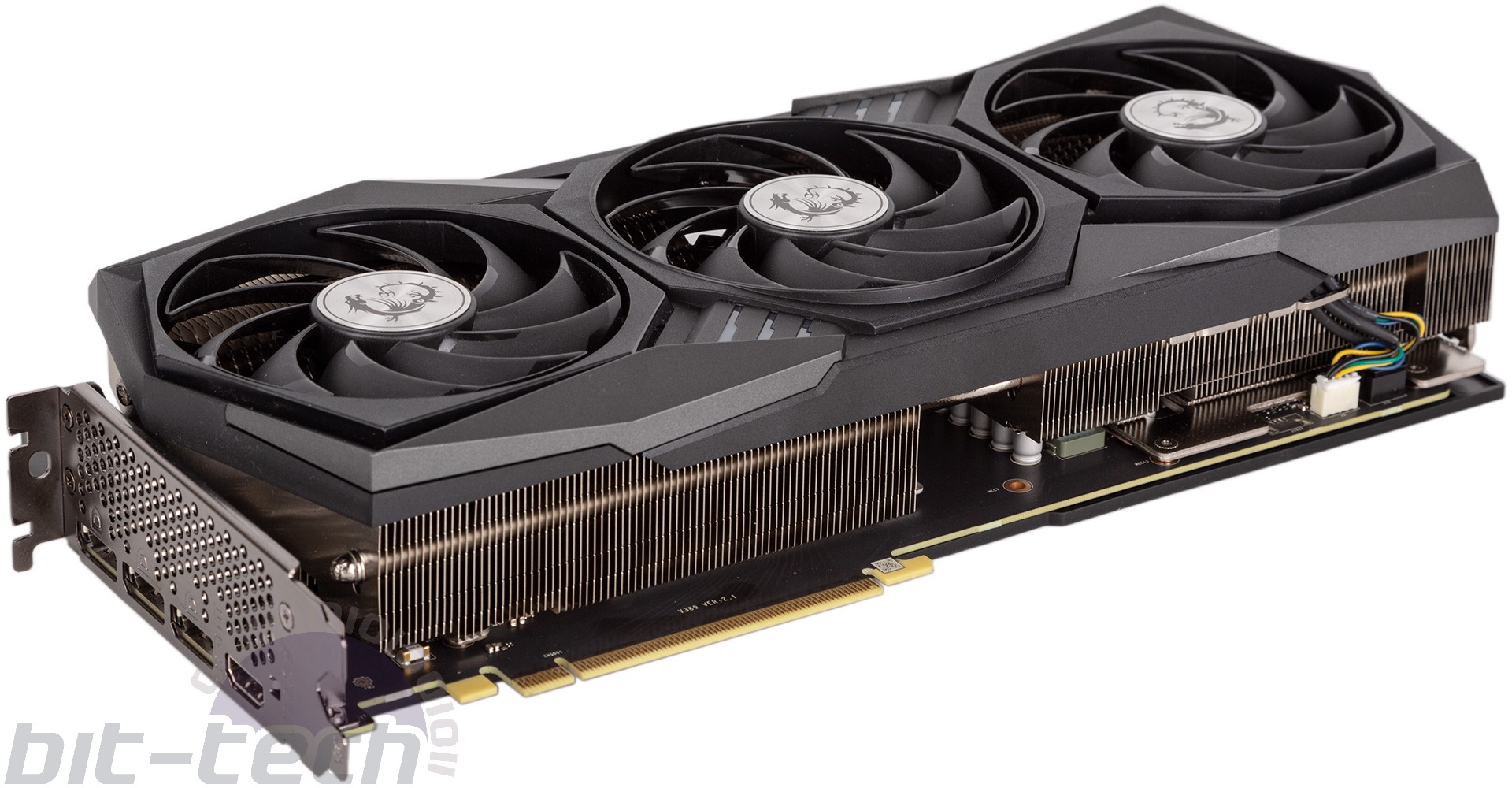
The Gaming X Trio ramps the boost clock up from the Founders Edition’s 1,710MHz to 1,815MHz. This 6% uplift (on paper) contributes to a 20W increase in the card’s power consumption, which now sits at a staggering 340W. That’s an awful lot of juice that will undoubtedly exert pressure on the PCB/power design as well as the cooler. The 10GB of GDDR6X, meanwhile, is unchanged and operates at 19Gbps for a memory bandwidth of 760GB/s.
Unlike Nvidia with its space-conscious design and sleek, industrial aesthetic, MSI (like others) opts for sheer size, and this card is hereby certified by bit-tech as a Big Boy. 323mm long and 140mm tall, the Gaming X Trio also occupies nearly a full three slots and weighs over 1.5kg. That’s nothing new, as the previous design was similarly massive, but there was 40W less power for the RTX 2080 Ti Gaming X Trio to deal with – hopefully MSI’s cooler tweaks have been sufficient to ensure that extra heat doesn't lead to major increases in fan speed and noise. With a card this big, it’s absolutely fair to expect low noise.
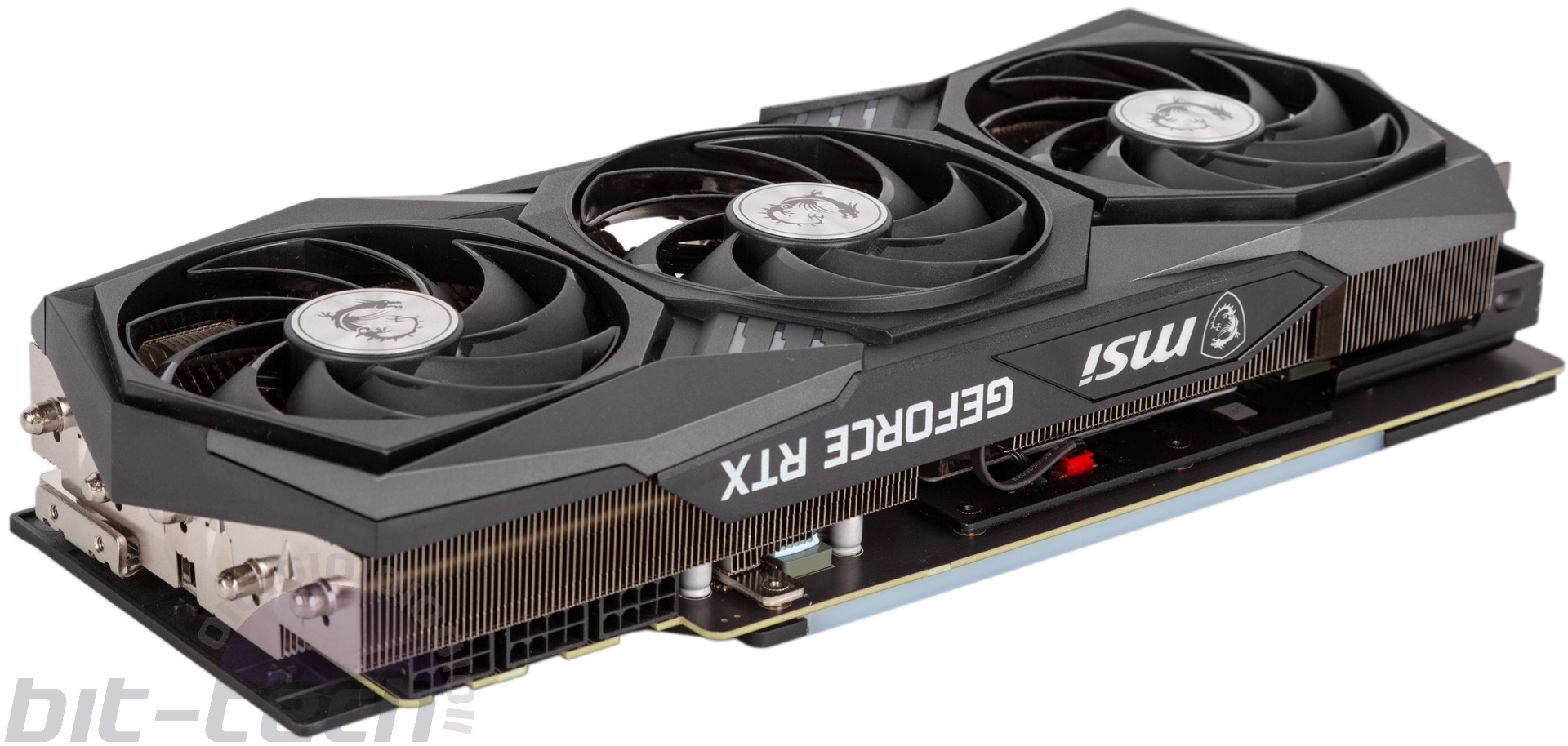
While we wouldn’t say it’s sleek, the aesthetic is at least toned down compared to some ‘gaming’-branded products on the market, and this is helped by the neutral black/grey colour scheme. Of course, RGB lighting does adorn the card in no less than three places: the three stripes on the cooler shroud, the MSI and dragon logos on the top side (not GeForce RTX, though), and the biggest and by far the brightest area, the bar on the edge of the backplate. It strikes us as an inelegant and rushed implementation of RGB; the light bar has obvious LED hot spots, and the difference in brightness between it and the logos is jarring.
Aside from the RGB misgivings, the build quality is good throughout the card. The card has an anti-bending bracket for extra rigidity, and to further help prevent GPU sag, MSI supplies an optional metal bracket designed to support it from below. Like the card, it’s massive and prominent, but it functions well and has thick rubber to cushion the contact points with the Gaming X Trio. There are no other accessories supplied.
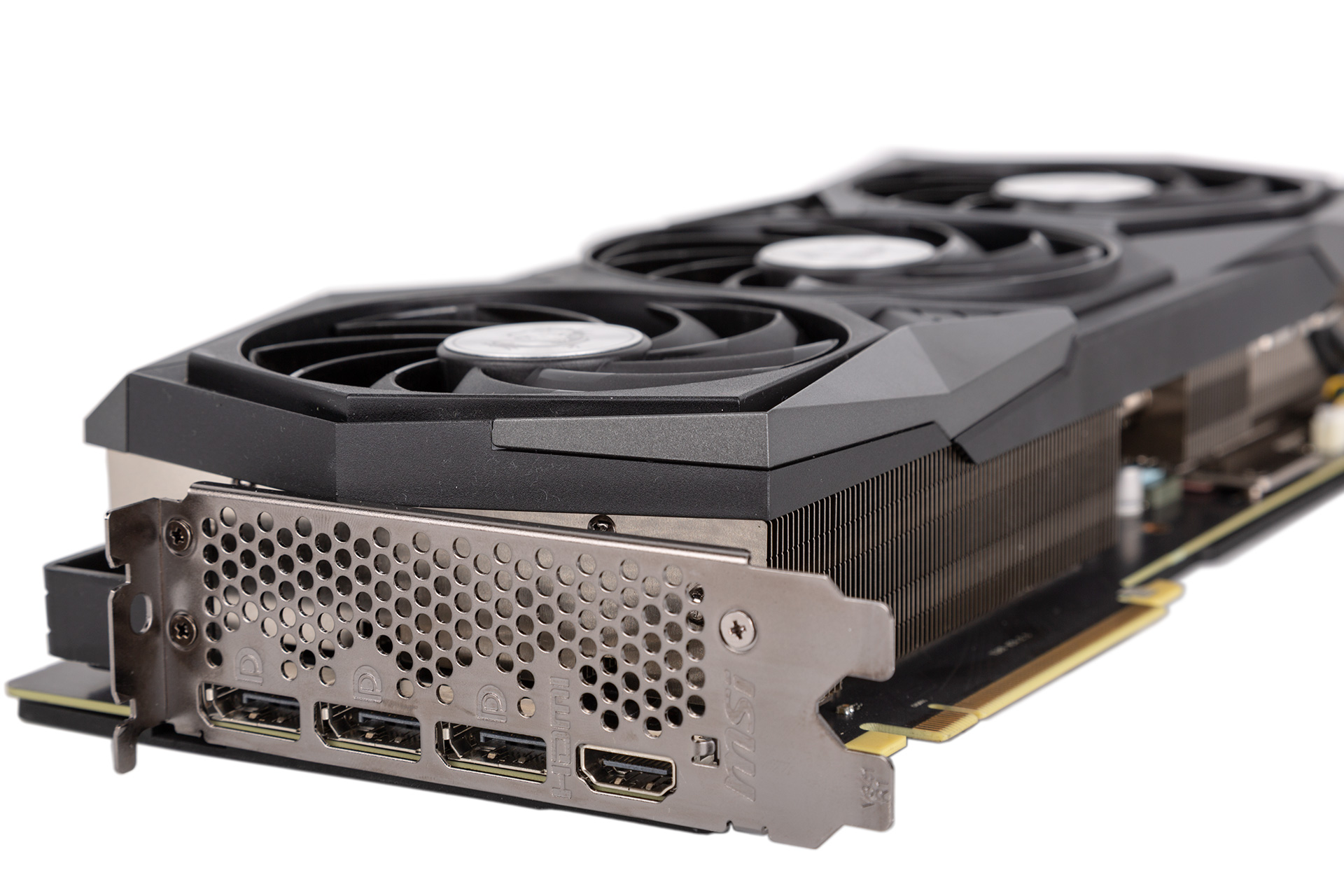
With VirtualLink now a mere blip on the radar, we’re back to standard display outputs, and MSI isn’t rocking the boat. The three DisplayPort 1.4a ports and solitary HDMI 2.1 here are a match for the Founders Edition, and wisely so.
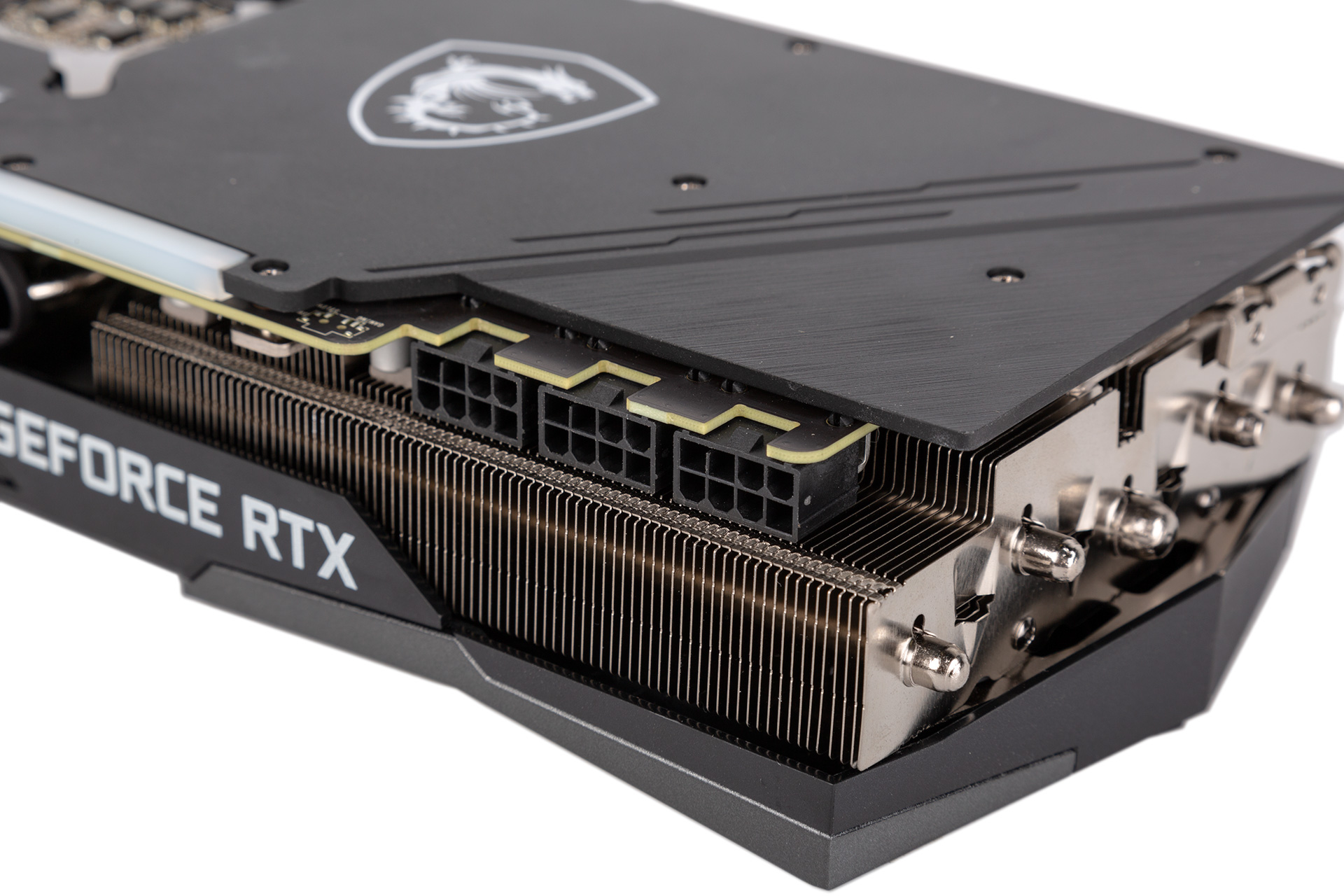
There’s no 12-pin power connector, and instead MSI has chosen a whopping three 8-pin connectors. Two would have covered the power requirements just fine, so the third seems like an unnecessary inconvenience for consumers. If you're thinking it enables a higher power limit, it does not. Without modding, the card is limited to a 102% power limit (~347W). Anyway, just make sure you have enough 8-pin cables available.
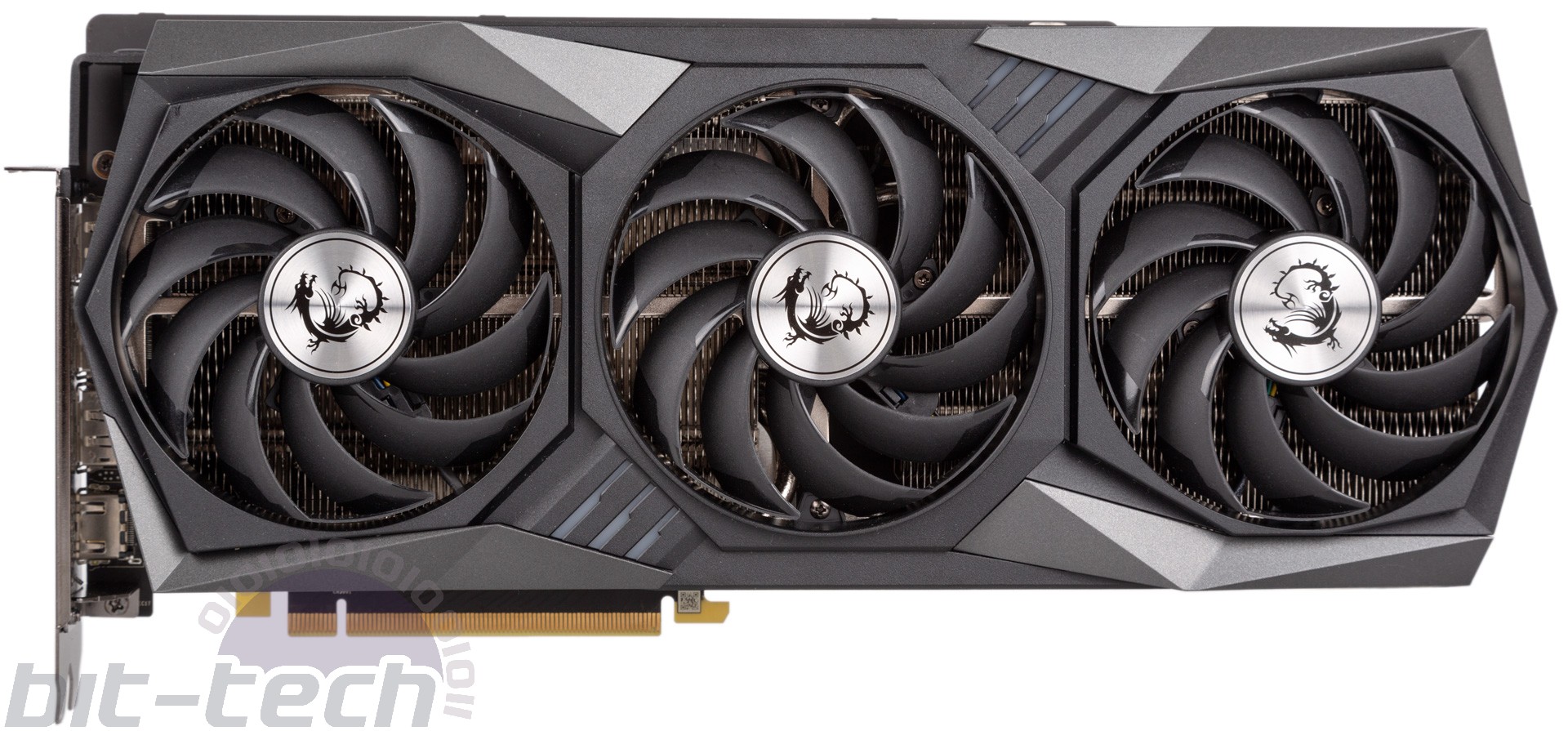
MSI’s Tri Frozr 2 cooling solution uses three ~90mm fans that have been upgraded to Torx 4.0. The main change is the bundling of fan blades into pairs, each pair being linked by an outer segment in a move claimed to improve static pressure. The fans continue to use double ball bearing motors and support semi-passive operation (‘Zero Frozr’ if you’re MSI), ensuring silence when the GPU is cool enough i.e. when idle.
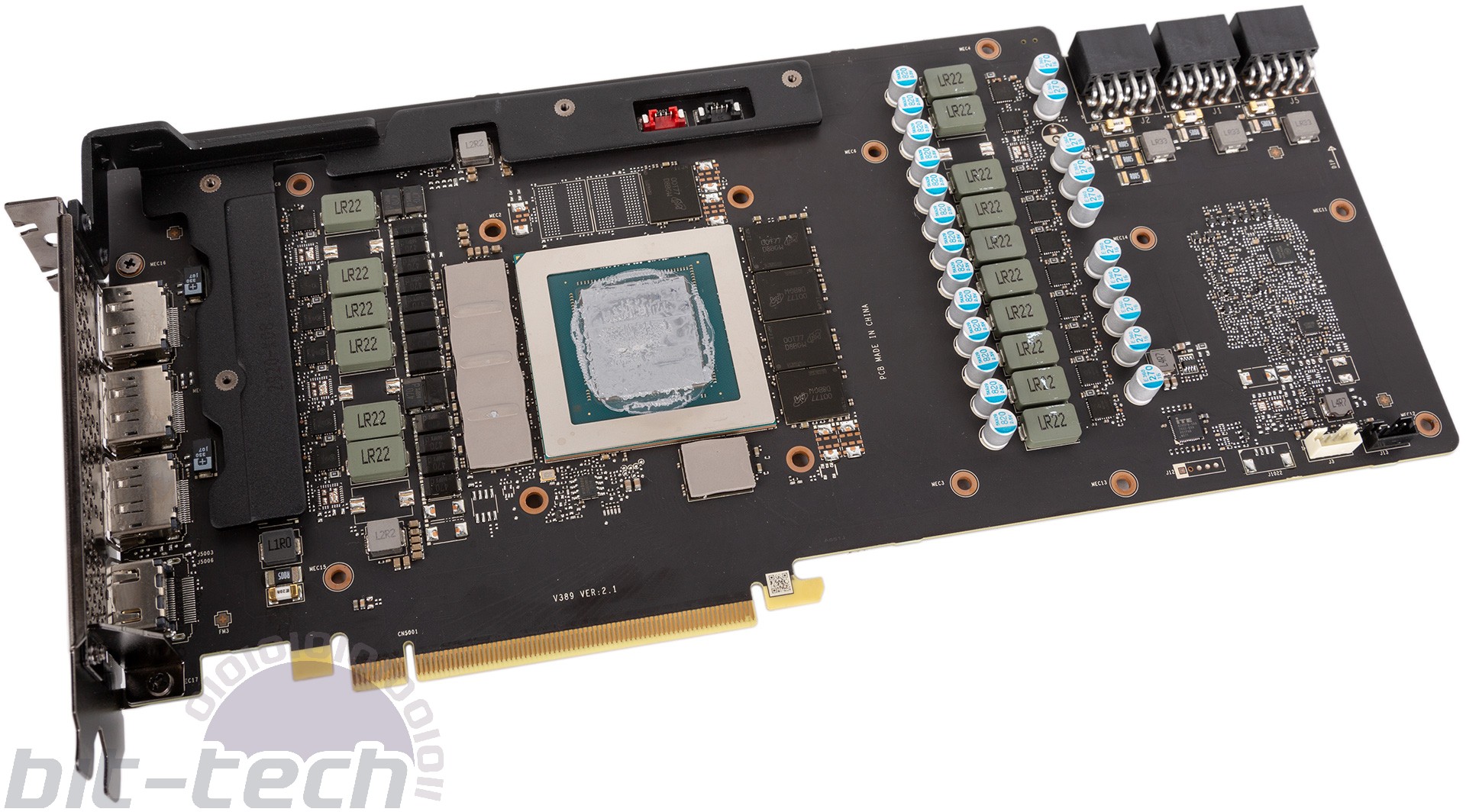
The PCB plays host to a 16-phase (13+3) power delivery design. The layout appears to be heavily based on the reference design (unsurprising for the first wave of cards), but it is a custom build by MSI.
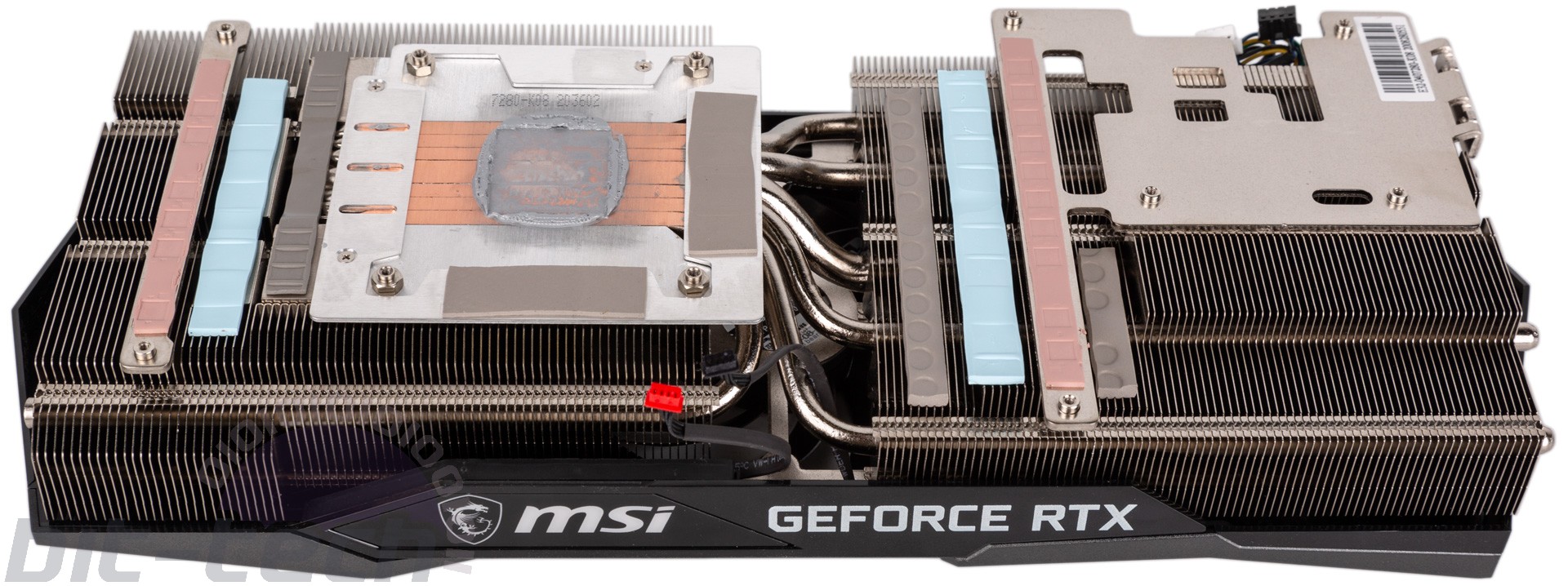
With the cooler pried off, you can see that it’s a comprehensive design. Seven nickel-plated heat pipes (six 6mm, one central 8mm) make direct contact with the GPU and in turn feed two separate fin stacks that are arranged so as to exhaust air out through the top edge (back into case) and bottom (against your motherboard and again back into case). Properly-sized thermal pads draw heat away from the 10 memory chips, and the heatsink also directly cools not only the MOSFETs, but also the chokes and capacitors of the power phases too, again via thermal pads.
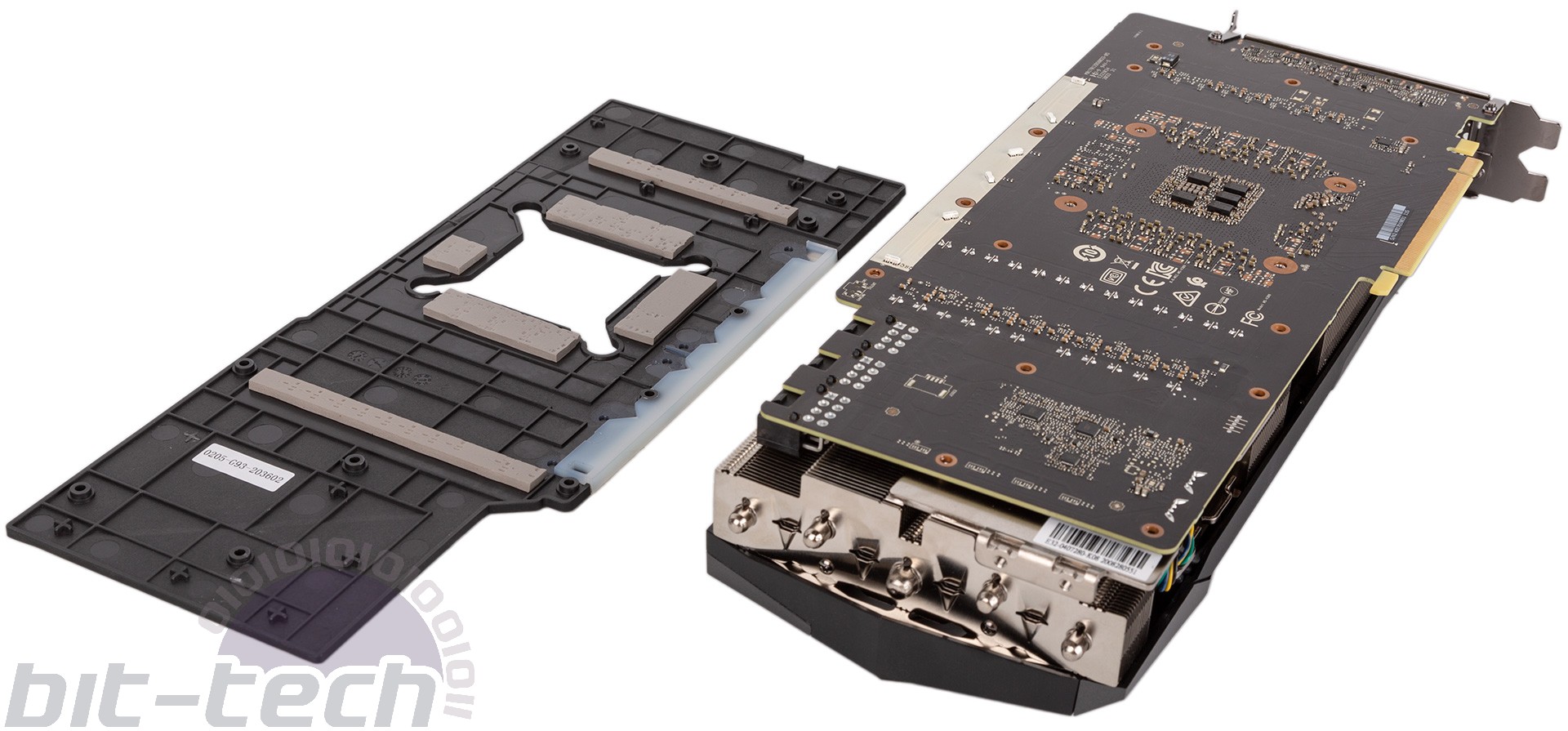
Pleasingly, MSI also puts the backplate to work cooling the card, using a number thermal pads to help it dissipate heat. Interestingly, this backplate is made of graphene, said to be 4x stronger and 20x better at heat dissipation than a plastic one. That’s probably true, but it’s also a silly comparison to make – plastic is not used to add strength or dissipate heat. Given that the previous Gaming X Trio cards had a lovely brushed metal backplate, this seems like a misguided attempt to spin a cost-cutting measure in good light. Still, we can’t fault MSI for actually making the backplate do some work.
Specifications
- Graphics processor Nvidia GeForce RTX 3080, 1,815MHz boost, 340W TDP
- Pipeline 8,704 stream processors, 68 RT Cores, 272 Tensor Cores, 272 texture units, 96 ROPs
- Memory 10GB GDDR6X, 19Gbps effective
- Bandwidth 760GB/sec (320-bit interface)
- Compatibility DirectX 12, Vulkan, OpenGL 4.5
- Outputs 3 x DisplayPort 1.4a, 1 x HDMI 2.1
- Power connections 3 x 8-pin PCIe, top-mounted
- Size 323mm long, 140mm tall, triple-slot
- Warranty Three years
(POS)CAPgate
Regarding PCB components, there’s now some ongoing post-launch drama for the RTX 3080. A not insignificant number of reviewers and early customers have experienced instability and crashes to desktop, prompting Igor’s Lab to dig deeper. The site has highlighted the difference between the two types of capacitors partners can use to directly feed the GPU (six are mounted behind the GPU’s BGA on the PCB). Surface-mounted aluminium polymer caps are one type (also known as SP-Caps and referred to – incorrectly – as POSCAPs), and multi-layered ceramic (MLCCs) are another. Data is still coming in, but the stability issues appear to particularly affect cards boosting to above 2GHz, and given that some workloads can cause some cards to do that straight out of the box, there’s a problem. The specific counts of SP-Caps and MLCCs varies by SKU, and Igor’s Lab reckons that those with more MLCCs are better and less likely to be unstable.
However, it’s far from clear-cut at this stage, and even partners can’t agree on how relevant the capacitors are in their damage control statements, which are now trickling out. EVGA sides with the idea that a design using only SP-Caps is a bad idea, saying its own designs with this layout couldn't pass validation in real-world applications, while Gigabyte has issued a statement justifying the use of just such a design in its own products, disputing the logic that SP-Caps are cheaper or worse than MLCCs.
Nvidia itself has responded with a new driver (456.55) claiming improved stability (after all, a launch driver causing unstable boost behaviour here and there on a brand-new architecture wouldn't be surprising), and MSI has since issued its own statement urging customers to update to it, before adding:
'MSI stands behind its design decisions for its GeForce RTX 30 Series graphics cards catalog which consists of GAMING models and VENTUS models. MSI utilizes a mixed capacitor grouping in its designs to benefit from the strengths of both SP-Caps and MLCCs. All MSI GeForce RTX 30 Series cards that have shipped out since the beginning of production, which include media review samples, feature the PCB configurations as shown in the updated images below.'
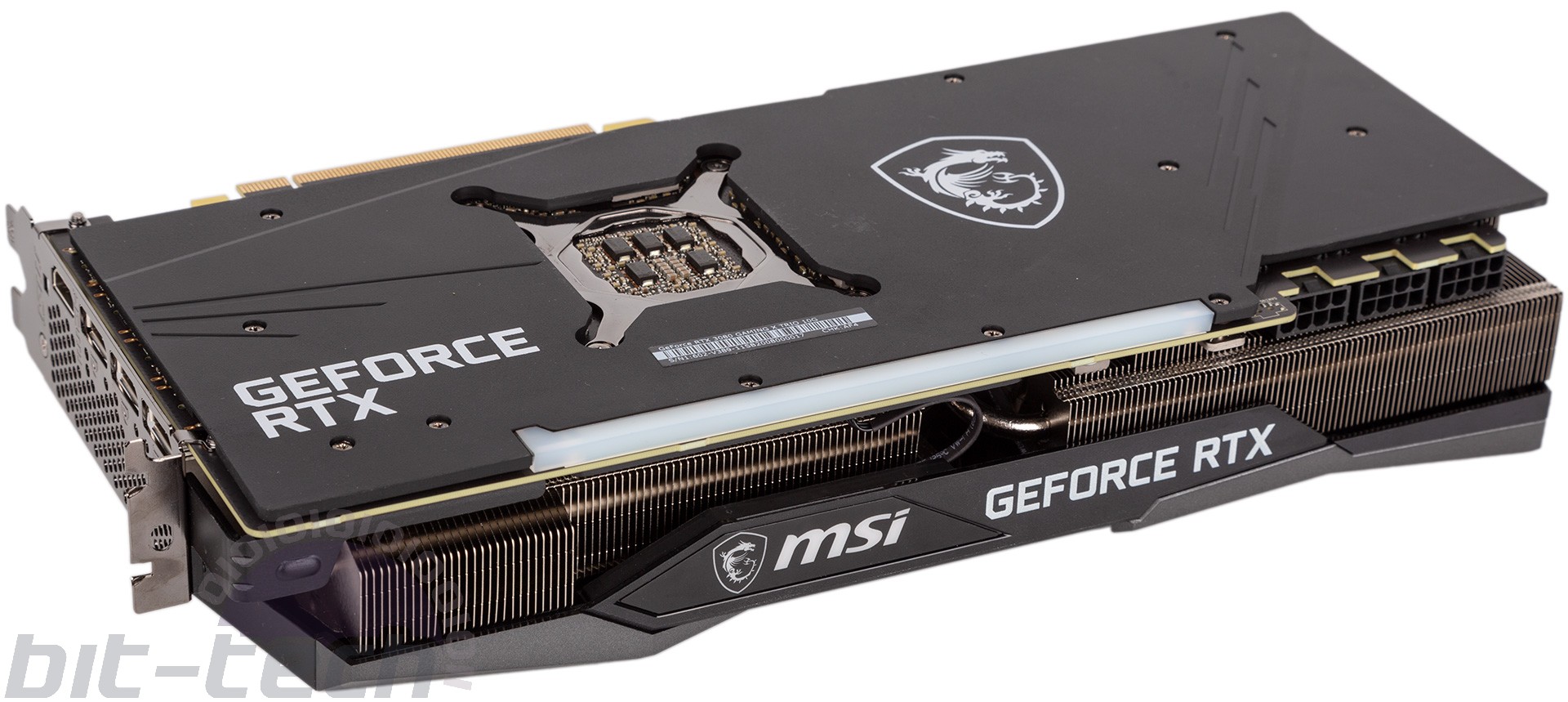
The image MSI supplied for the RTX 3080 Gaming X Trio is indeed a match for our review sample, which is pictured above. Furthermore, MSI confirms there is 'only one version of each model on the market and they are the same models that have been reviewed by media around the world. The confusion was caused by our initial product pictures taken on early engineering samples. Before the cards went into mass production in their final configuration, some models were slightly revised. Final production images were updated onto our website. These are the images of the cards our end-users are able to buy and the media have reviewed.'
Using the links provided, you can dig ever deeper into the issue if you wish, but our testing of this particular sample (with five SP-Caps and one MLCC array) was free of stability issues at stock frequencies, and it should go without saying that anyone experiencing crashes at stock frequencies would be eligible for an RMA, so let's move on.
MSI MPG Velox 100R Chassis Review
October 14 2021 | 15:04

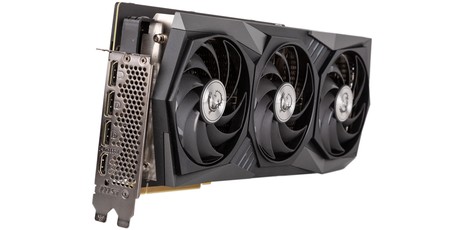

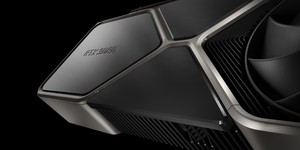
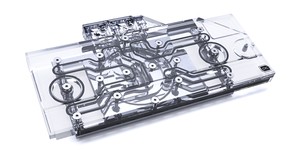




Want to comment? Please log in.